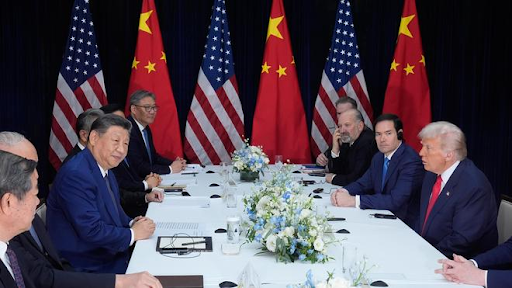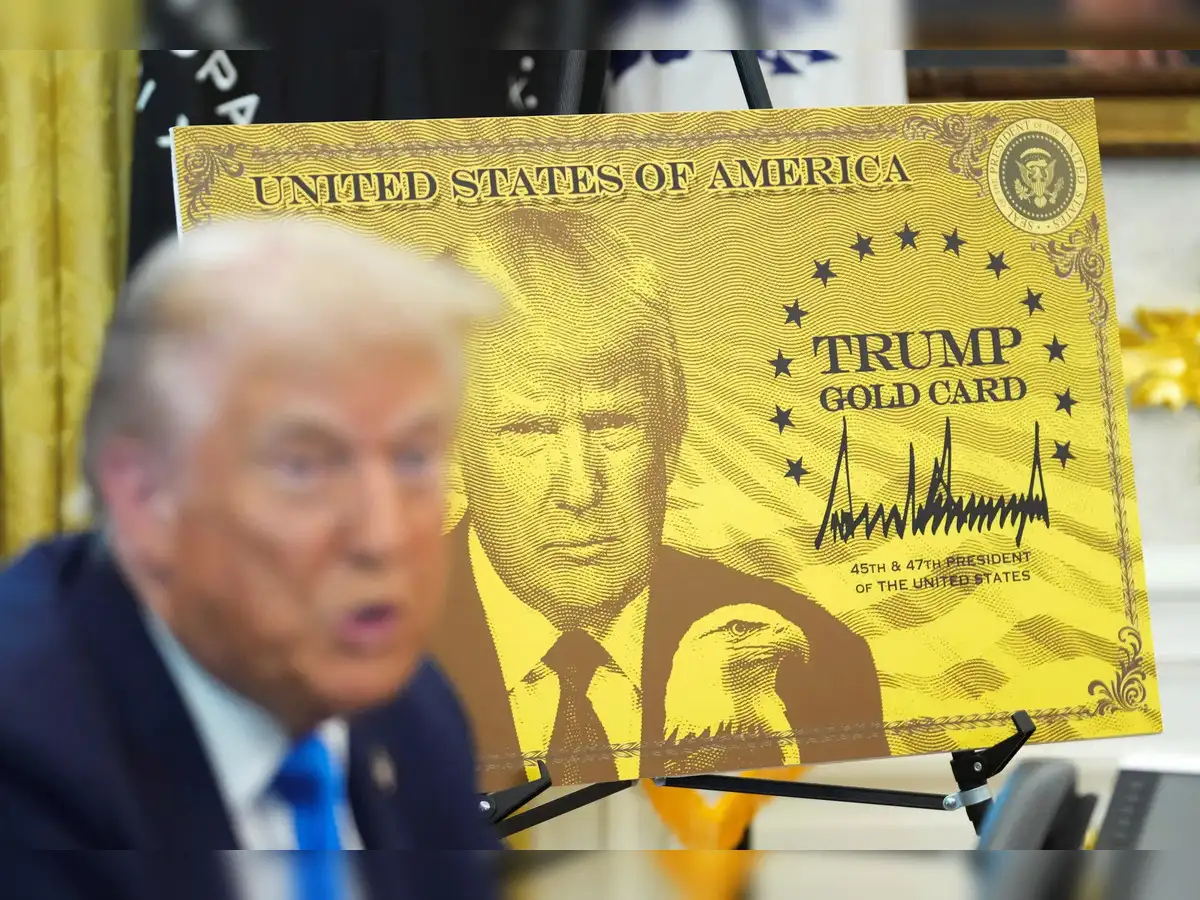



Trump’s Middle East visit marks a major policy shift, prioritizing trade over intervention. He lifted Syria sanctions, met President al-Sharaa, and secured $2 trillion in deals. Emphasizing regional stability through local actors and diplomacy, his approach affects Iran, Israel, and Syria, offering India opportunities in energy, defense, and economic engagement.

Copyright infringement not intended
Picture Courtesy: INDIAN EXPRESS
President Donald Trump's visit to Saudi Arabia, Qatar, and the UAE marked a significant shift in the U.S. Middle East policy.
Meeting with Ahmed al-Sharaa
Trump meets Syrian President Ahmed al-Sharaa in Riyadh, the first U.S.-Syria presidential meeting in 25 years.
Al-Sharaa, once a leader of the al-Qaeda-affiliated Al-Nusrah Front, led the rebel alliance that exiled Bashar al-Assad in December 2024. The U.S. had placed a $10 million bounty on him until December 2024, but Trump now calls him a “young, attractive, tough guy” with the potential to stabilize Syria.
The meeting shows Trump’s willingness to engage with former opponents for pragmatic reasons.
Lifting Sanctions on Syria
Trump announces the end of all U.S. sanctions on Syria, in place since 1979 due to Syria’s designation as a State Sponsor of Terrorism. These sanctions, tightened after 2011 under the Caesar Act for human rights abuses, crippled Syria’s economy, causing losses of about $800 billion from the civil war (2011-24).
Trump says the sanctions were “brutal and crippling” but are no longer required, giving Syria “a chance at greatness.” This decision aims to support Syria’s reconstruction and reintegration into the region, but it requires Congressional approval for some measures.
Trade Deals
Trump secures over $2 trillion in investment agreements across the three nations. Key deals include:
These deals focus on defense, aviation, AI, and infrastructure, aligning with the Gulf states’ economic diversification goals and Trump’s trade-driven agenda.
Cultural and Diplomatic Engagements
Trump participates in cultural activities, like the Ardah sword dance in Saudi Arabia, coffee and dates in Qatar, and a visit to the Sheikh Zayed Grand Mosque in the UAE. He received the UAE’s Order of Zayed, its highest civilian honor.
Diplomatically, he attends a Gulf Cooperation Council (GCC) summit in Riyadh, urging Syria to join the Abraham Accords and normalize ties with Israel.
Shift in U.S. Foreign Policy
Trump’s visit marks a “significant shift” in U.S. Middle East policy. He rejects decades of U.S. interventionism, saying he won’t “lecture” the region on governance.
He emphasizes “commerce, not chaos,” prioritizing economic deals and regional stability over human rights or democracy promotion.
Economic Prosperity through Trade
Trump views trade as a tool to resolve conflicts and boost U.S. economic interests. He secures massive deals to bring investments into the U.S., create jobs, and strengthen ties with Gulf states. His focus on AI, defense, and infrastructure reflects a belief that economic growth can stabilize the region.
Regional Stability via Local Actors
Trump prefers regionally-owned solutions, encouraging Gulf states like Saudi Arabia, Qatar, and the UAE to lead Syria’s reconstruction and mediate conflicts. He avoids proactive U.S. commitments, instead urging al-Sharaa to handle ISIS detention centers and deport “Palestinian terrorists.” This aligns with his goal to reduce U.S. troop presence in Syria and Iraq, a process he has already started.
Diplomatic Engagement with Adversaries
Trump engages with former foes like al-Sharaa and signals openness to a nuclear deal with Iran. He describes Iran as a country that could be “successful” but warns it against pursuing nuclear weapons. This carrot-and-stick approach—offe sanctions relief but threatening “maximum pressure”—aims to stabilize the region without direct U.S. military involvement.
Iran
Trump announces progress in nuclear talks, with Iran’s advisor indicating willingness to limit uranium enrichment if sanctions are lifted. Trump’s ceasefire with the Iran-backed Houthis in Yemen, announced before the trip, shows willingness to negotiate with Iran’s proxies.
Israel
Israel faces challenges from Trump’s policies. His decision to lift Syria sanctions and meet al-Sharaa, whom Israel calls a “terrorist”. Israel opposes Syria’s reintegration, fearing it strengthens Iran’s former ally.
Trump’s exclusion of Israel from the visit, nuclear talks with Iran, and Houthi ceasefire negotiations increase Israel’s sense of isolation.
Despite Trump’s claim that his Gulf ties benefit Israel, his push for Saudi Arabia to join the Abraham Accords is pending due to Saudi’s demand for Palestinian statehood, which Israel rejects.
Israel’s military actions in Syria, including airstrikes and Golan Heights expansion, complicate Trump’s regional vision.
Syria
USA Sanctions relief to promote Gulf states to invest in Syria’s mineral and oil reserves. Al-Sharaa’s moderate stance and efforts to unite Syria’s factions make him a viable partner for Trump’s stability-focused agenda. If successful, Syria could reintegrate into the region, reducing Iran and Russia’s influence.
|
Trump’s Middle East trade deals create a favorable environment for India to deepen Gulf partnerships, especially in AI, defense, and renewable energy. Trump’s policies could stabilize the region. India benefits from a stable Middle East => Energy security and diaspora interests. |
Must Read Articles:
INDIA-MIDDLE EAST-EUROPE CORRIDOR (IMEC)
THE IRAN-ISRAEL CONFLICT & IMPACT
Source:
|
PRACTICE QUESTION Q. Critically analyze the evolving geopolitical dynamics in the Middle East post-Arab Spring and their implications for India’s energy security and diaspora interests. 150 words |




© 2026 iasgyan. All right reserved